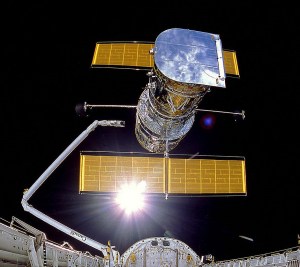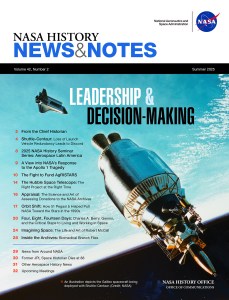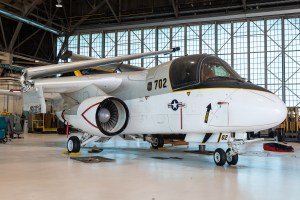On July 28, 1973, the second crew to occupy Skylab, American’s first space station, lifted off from NASA’s Kennedy Space Center (KSC) in Florida on a planned two-month mission, at the time the longest human spaceflight.
On July 28, 1973, the second crew to occupy Skylab, American’s first space station, lifted off from NASA’s Kennedy Space Center (KSC) in Florida on a planned two-month mission, at the time the longest human spaceflight. The Skylab 3 crew of Commander Alan L. Bean, a veteran of the Apollo 12 Moon landing mission, and space rookies Pilot Jack R. Lousma and Science Pilot Owen K. Garriott reactivated the station, orbiting unoccupied since its first crew departed on June 22. During a spacewalk on Aug. 6, the astronauts installed a more permanent sunshade to cool the station, damaged during its launch on May 14. They studied the effects of long-duration weightlessness on the human body, observed the Earth and the Sun, and made repairs to the space station.
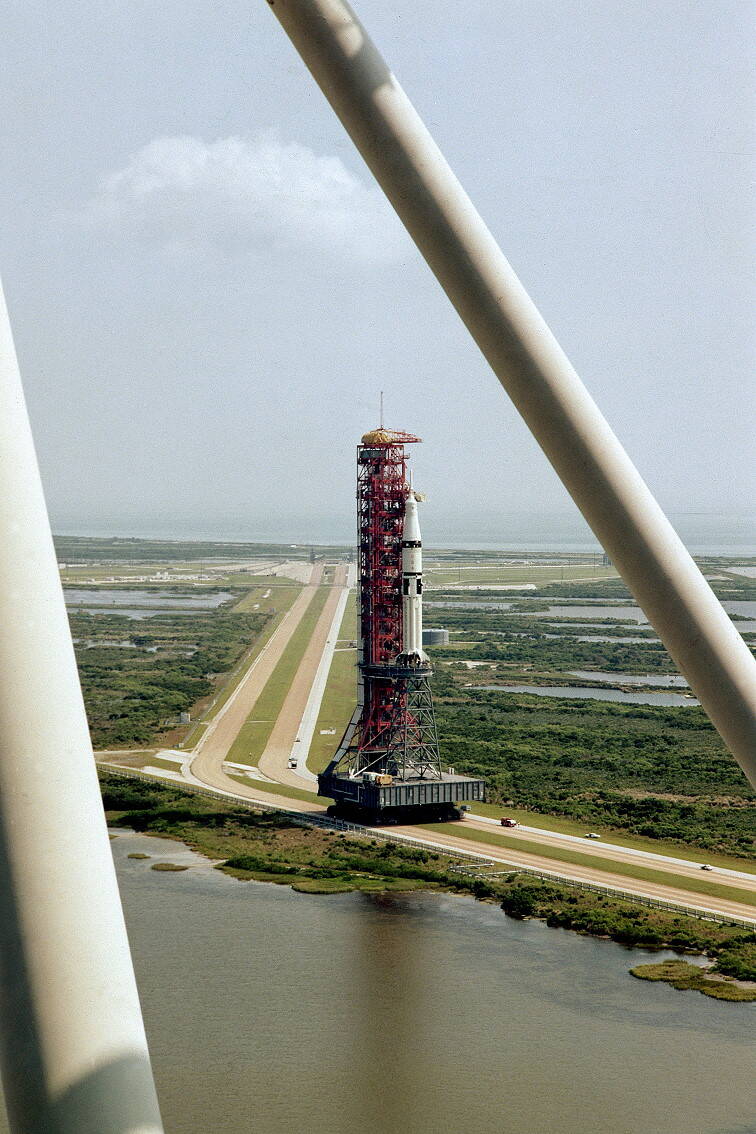
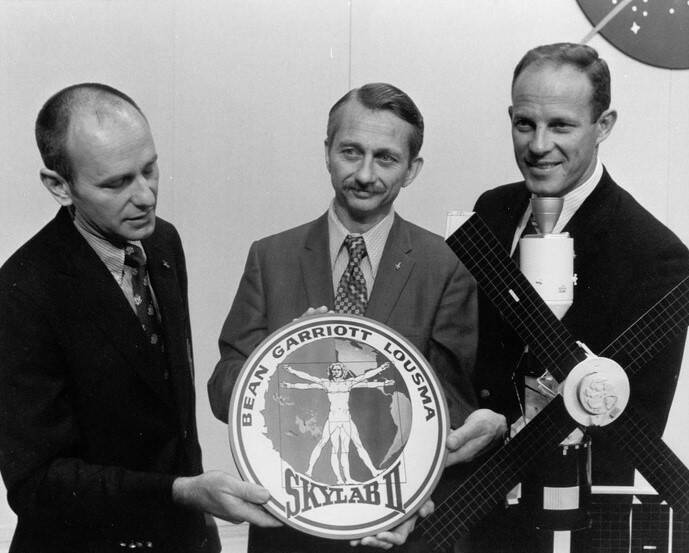
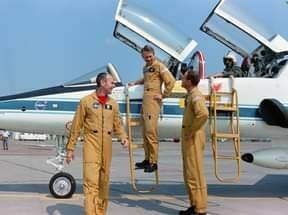
Left: Rollout of the Skylab 3 Saturn IB to Launch Pad 39B on June 11, 1973. Middle: Skylab 3 astronauts Alan L. Bean, left, Owen K. Garriott, and Jack R. Lousma hold their crew patch during their preflight crew press conference. Right: Bean, left, Garriott, and Lousma arrive at Patrick Air Force Base near NASA’s Kennedy Space Center in Florida prior to their launch.
Orbiting unoccupied since its first crew departed, Skylab, American’s first space station, prepared to welcome its second set of occupants, astronauts Bean, Lousma, and Garriott. Originally planned for Aug. 17, 1973, NASA accelerated the launch date of the second crew by 3 weeks due to concerns with the ability of the parasol installed by the Skylab 2 crew to continue to cool the station and problems with its attitude-sensing gyroscopes. This second crew planned to deploy a more permanent sunshade, already onboard Skylab, and NASA stowed replacement gyroscopes into the Command Module (CM) in case they were needed. The astronauts planned to conduct a variety of scientific experiments during their 59 days in space, more than doubling the previous crew’s orbital duration. To more effectively counteract the effects of long-duration weightlessness, the second crew planned to spend more time exercising while onboard, based on the first crew’s experience. Two minnows, 50 minnow fish eggs, six pocket mice, 720 fruit fly pupae, and two spiders as part of scientific studies rounded out the crew. The spiders, named Arabella and Anita, flew as a student experiment to study the ability of arachnids to weave webs in weightlessness.
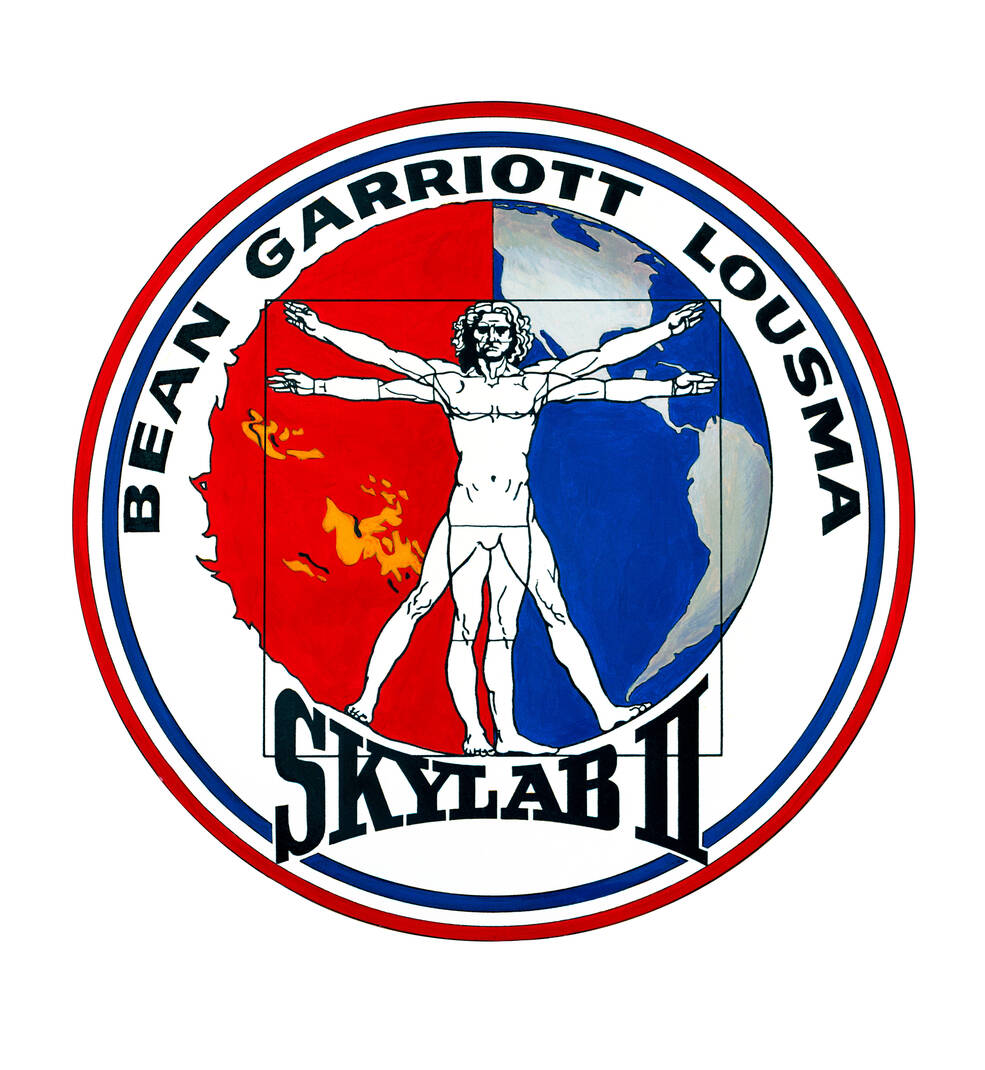
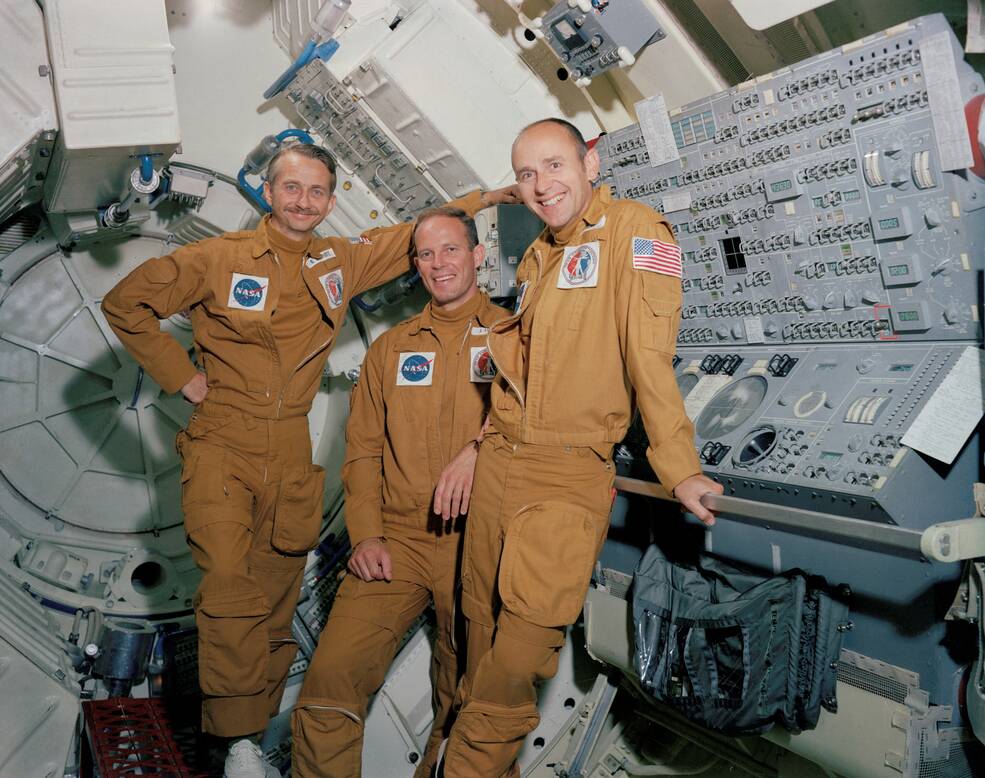
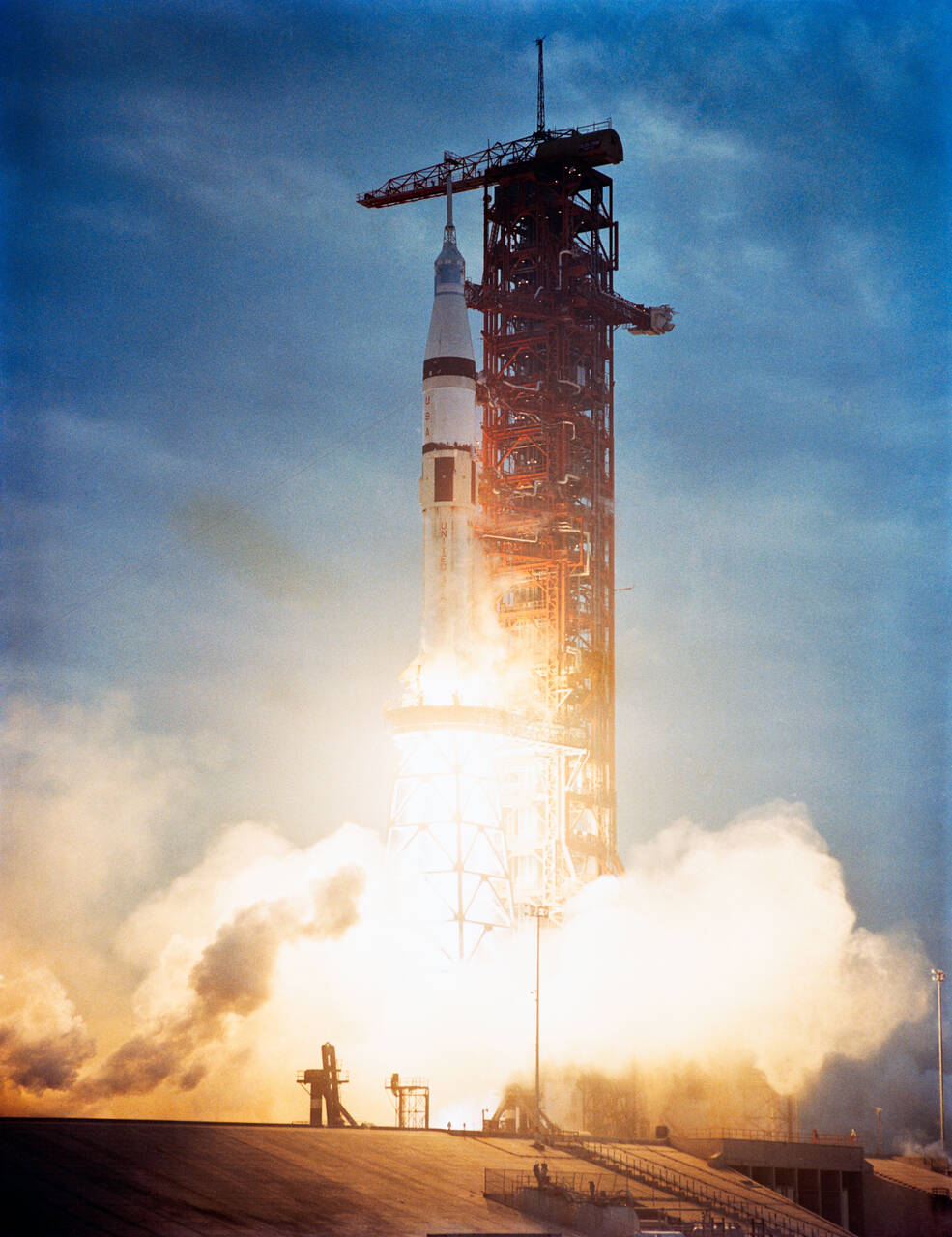
Left: Crew patch of the second mission to Skylab. Middle: Official photo of the Skylab 3 crew of Owen K. Garriott, left, Jack R. Lousma, and Alan L. Bean. Right: Launch of Skylab 3 on a Saturn IB rocket.
The Saturn IB rocket carrying the Skylab 3 crew thundered off KSC’s Launch Pad 39B on July 28, to begin the 8-hour rendezvous with Skylab. Shortly after reaching orbit, however, one of the four clusters or quads of thrusters began to leak. The thrusters. located at 90-degree intervals around the Service Module (SM), provided attitude control during rendezvous maneuvers. The only solution was to shut off that quad, forcing the crew to complete the rendezvous, inspection fly-around, and docking using only the three working quads, a scenario they never practiced before the mission. Using a handheld HP-35 calculator to calculate their approach velocity to the station, the crew successfully completed the difficult maneuvers and docked with Skylab, the first time a space station received a second crew.
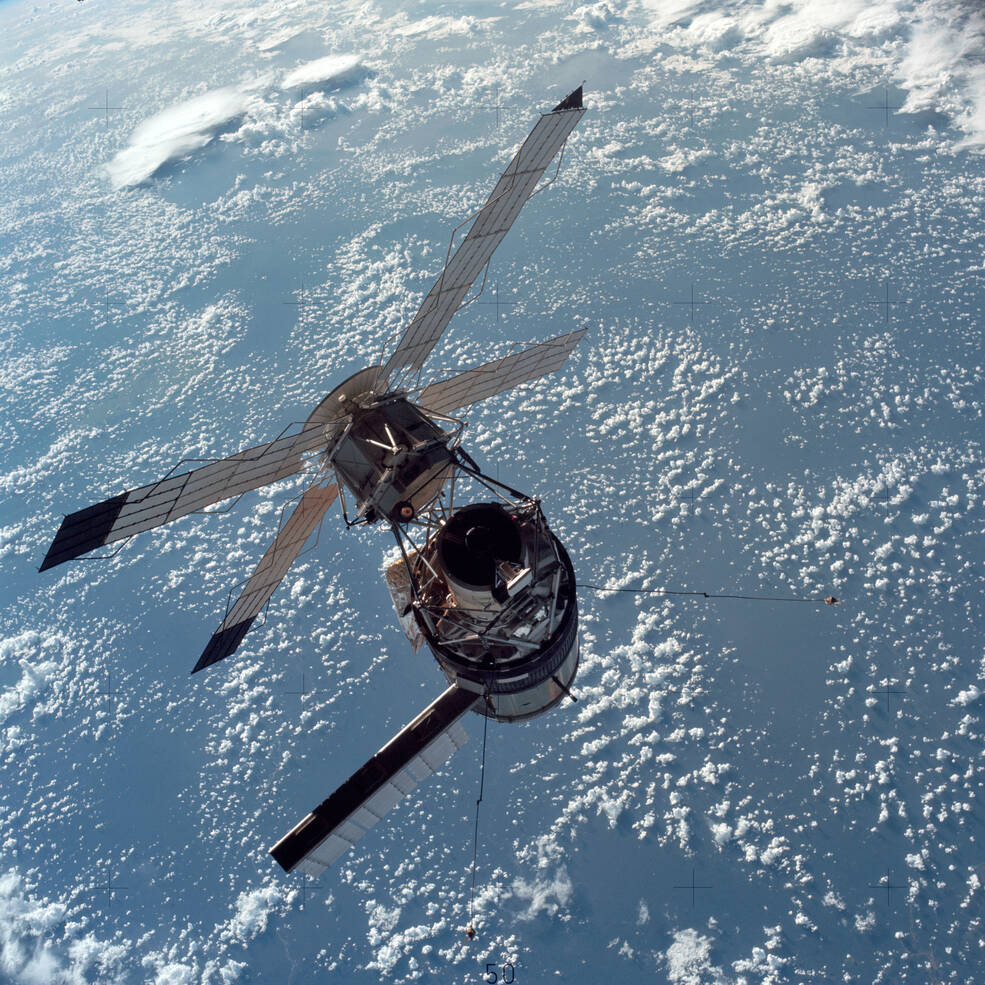
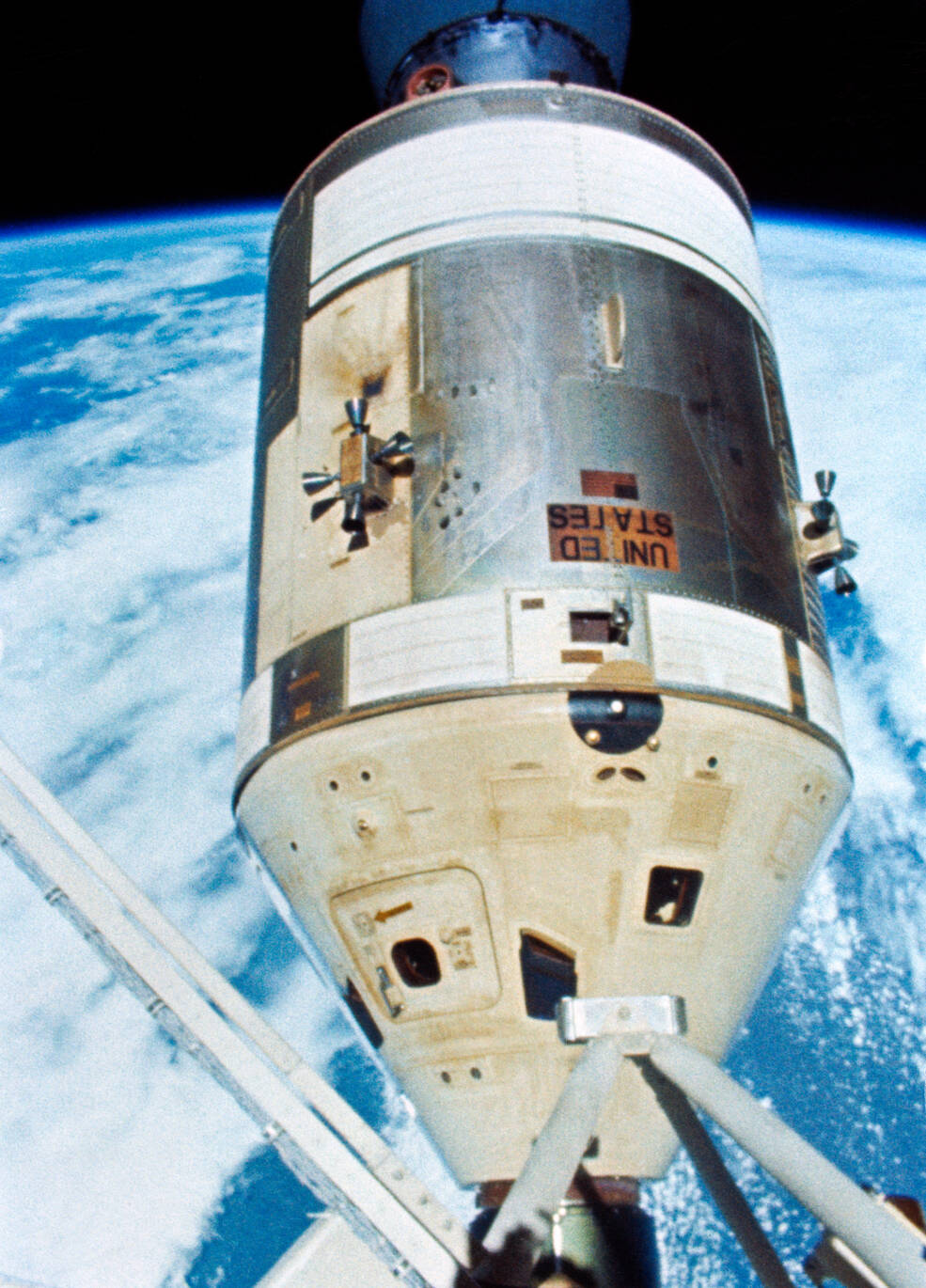
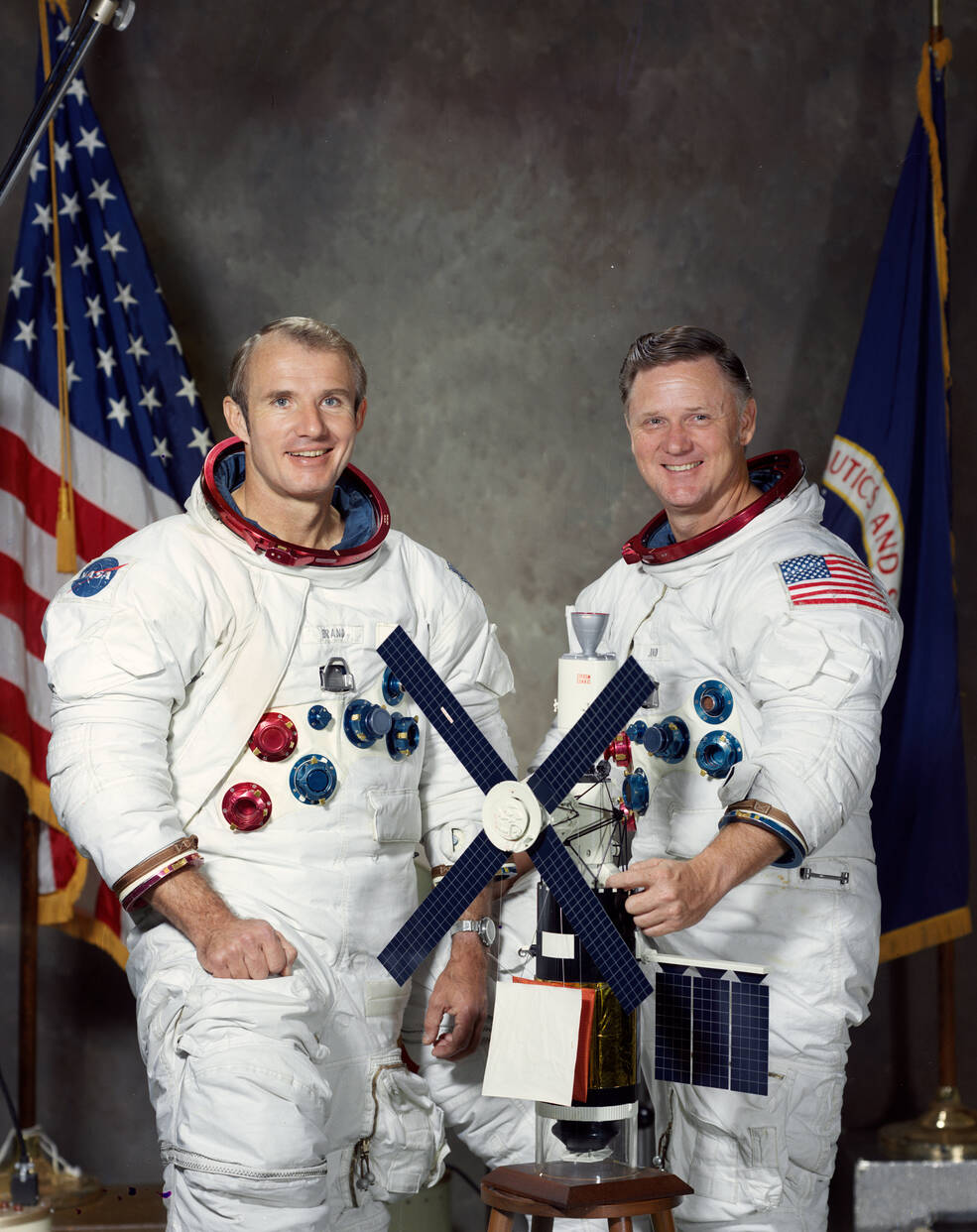
Left: Skylab as it appeared to the Skylab 3 crew during the inspection fly-around. Middle: Image of the Skylab 4 Command and Service Module, showing the location of two of the four quads of attitude control thrusters on the Service Module. Right: The Skylab Rescue crew of Vance D. Brand, left, and Don L. Lind.
Shortly after their move into the space station, all three crewmembers experienced symptoms of space motion sickness, causing them to fall behind their timelines. Managers delayed the first spacewalk planned for July 31 by several days to allow them time to recover. In the meantime, a second set of thrusters on the SM began to leak and the crew quickly shut that quad down. Ground controllers grew concerned that with only half its thrusters operating, the SM may not be able to safely return the crew to Earth. NASA managers decided to put in place a unique feature of Skylab: a rescue capability. Workers at KSC accelerated the assembly of the next Saturn IB and Apollo spacecraft, rolling the vehicle to Launch Pad 39B on Aug. 14 to enable a launch by early September. In this rescue scenario, astronauts Vance D. Brand and Don L. Lind would fly to Skylab and dock at its lateral docking port and bring Bean, Lousma, and Garriott home in a CM modified to accommodate five crew members. In the end, managers decided that the Skylab 3 crew could use workaround procedures that Brand and Lind developed in ground simulators to return home safely with only half the thrusters working, and called off the rescue attempt.
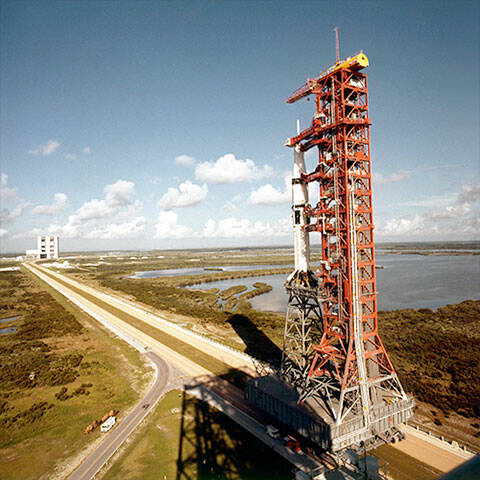
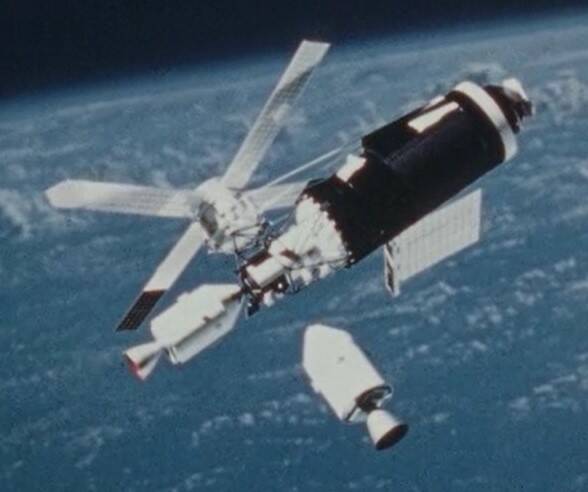
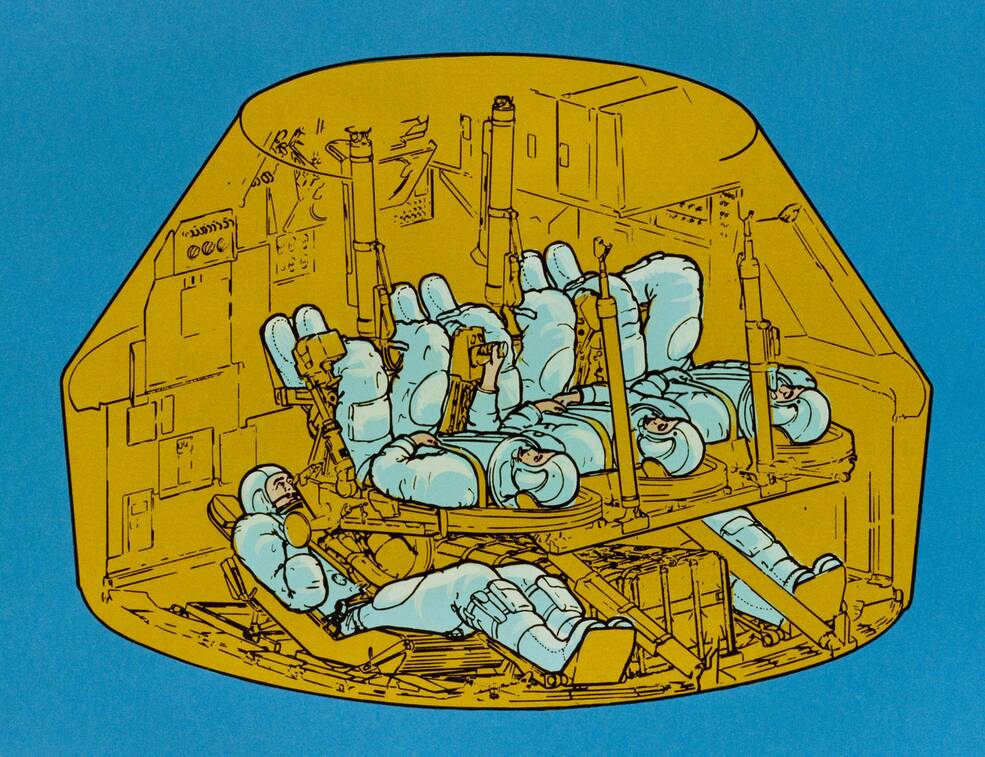
Left: Rollout of the Saturn IB and Apollo spacecraft to prepare for a possible rescue mission. Middle: Illustration of the rescue Apollo spacecraft preparing to dock at Skylab’s lateral port. Right: Illustration of the two extra crew couches in the Apollo spacecraft for a possible rescue mission.
With the crew feeling better and the crisis over the leaking thrusters averted, Bean, Garriott and Lousma began working on their science program and preparing for the mission’s first spacewalk. They activated the Earth Resources Experiment Package (EREP), a suite of sensors that observed the Earth in the visible, infrared and microwave spectra, and completed several scans of various sites. They began the inflight portion of the medical experiments started before the mission, including monitoring their cardiovascular system’s response to weightlessness using the Lower Body Negative Pressure device, measuring their weight using the Body Mass Measuring Device, and testing their vestibular responses using a rotating chair. They also took the first of their weekly showers.
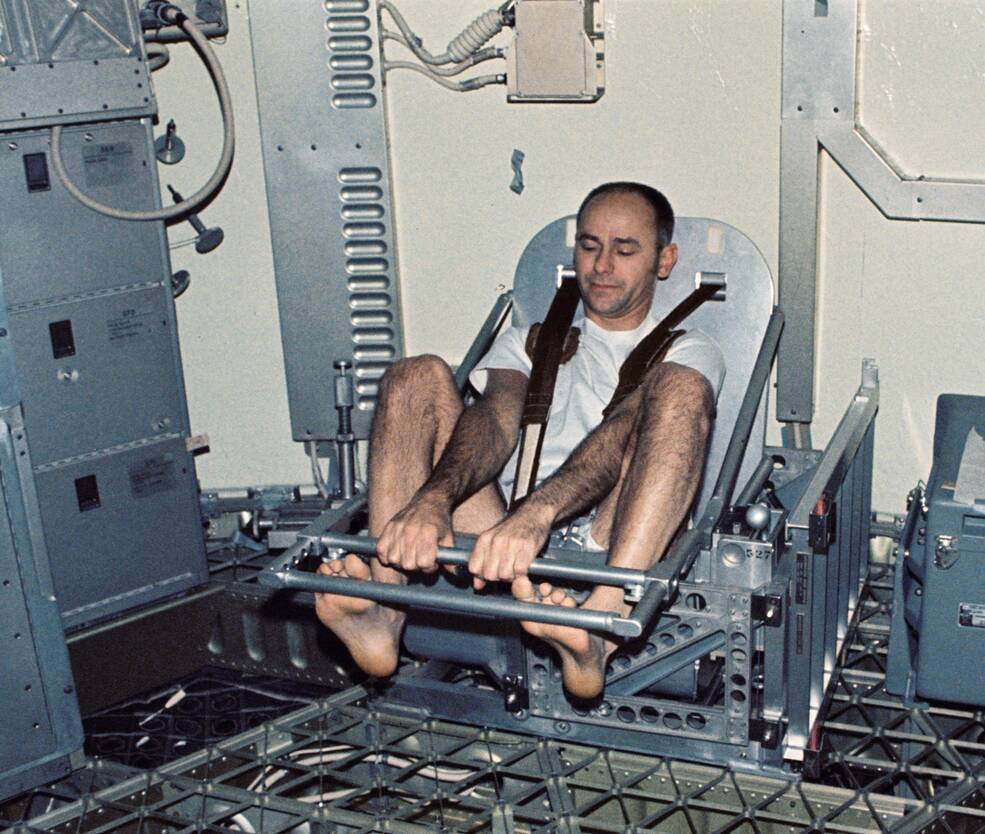
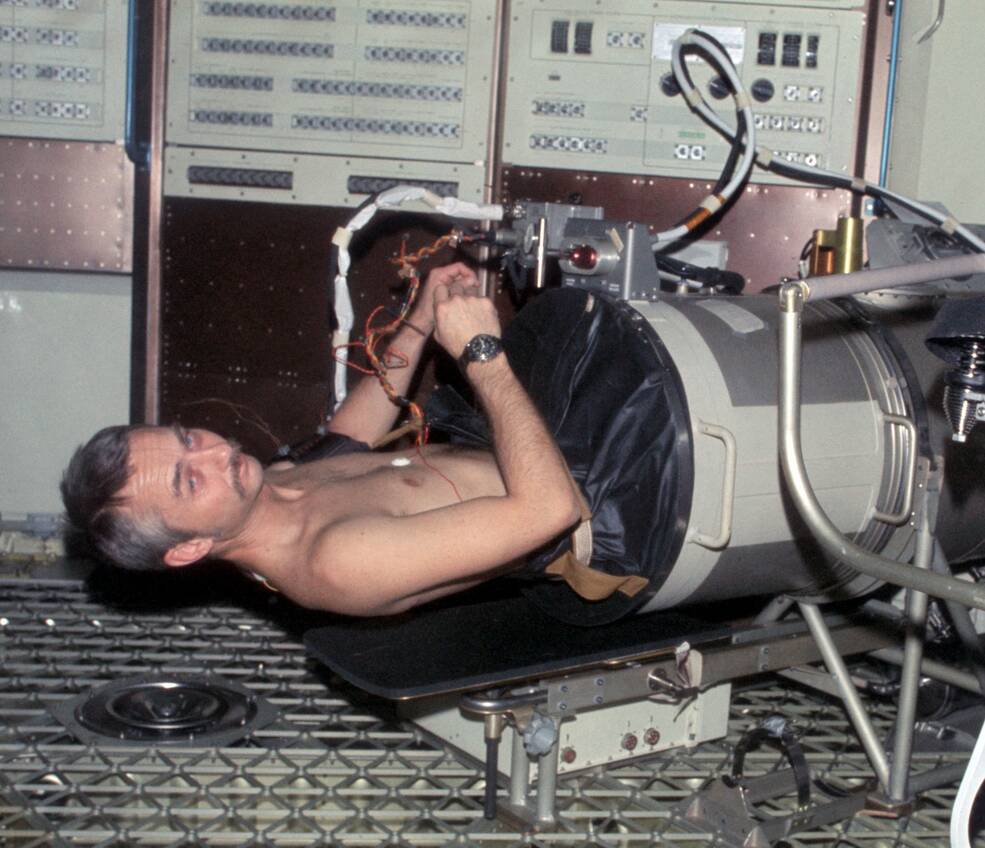
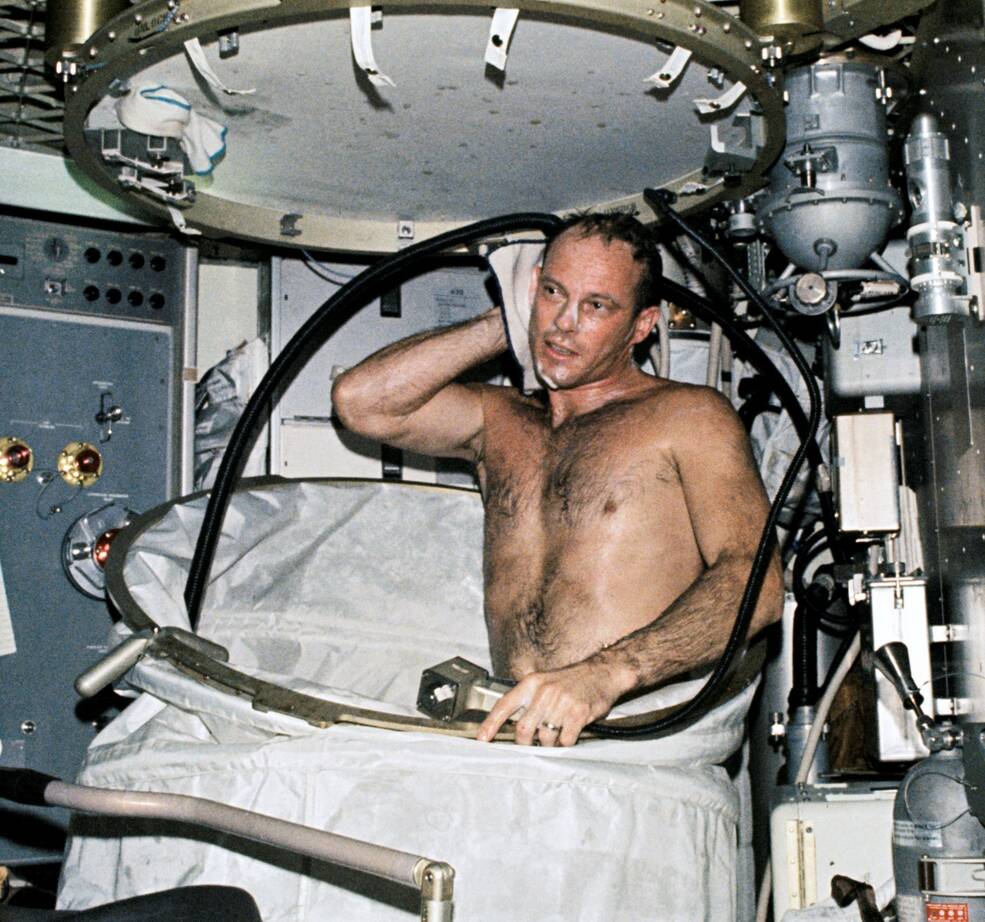
Left: Skylab 3 astronaut Alan L. Bean uses the Body Mass Measurement Device to record his body weight in weightlessness. Middle: Owen K. Garriott monitors his cardiovascular system in the Lower Body Negative Pressure Device. Right: Jack R. Lousma takes a zero-gravity shower aboard Skylab.
Garriott and Lousma readied their spacesuits and all the tools and equipment for the spacewalk on Aug. 6 to install a more permanent sunshade over the space station. Engineers at NASA’s Marshall Space Flight Center in Huntsville, Alabama, developed this twin-pole sunshade shortly after Skylab’s launch and the Skylab 2 astronauts brought it to space. Another task for the spacewalk involved the installation of fresh film canisters in the Apollo Telescope Mount (ATM) to operate the six instruments for solar and astronomy observations.
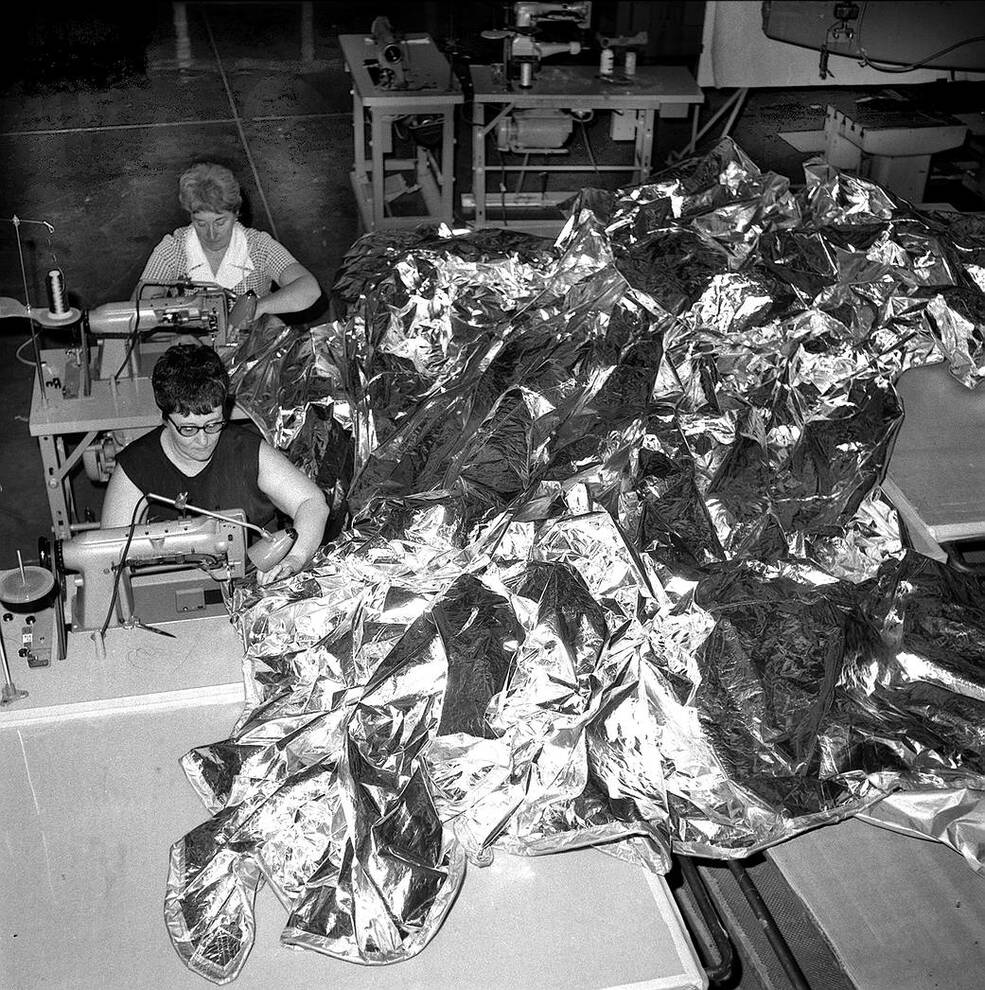
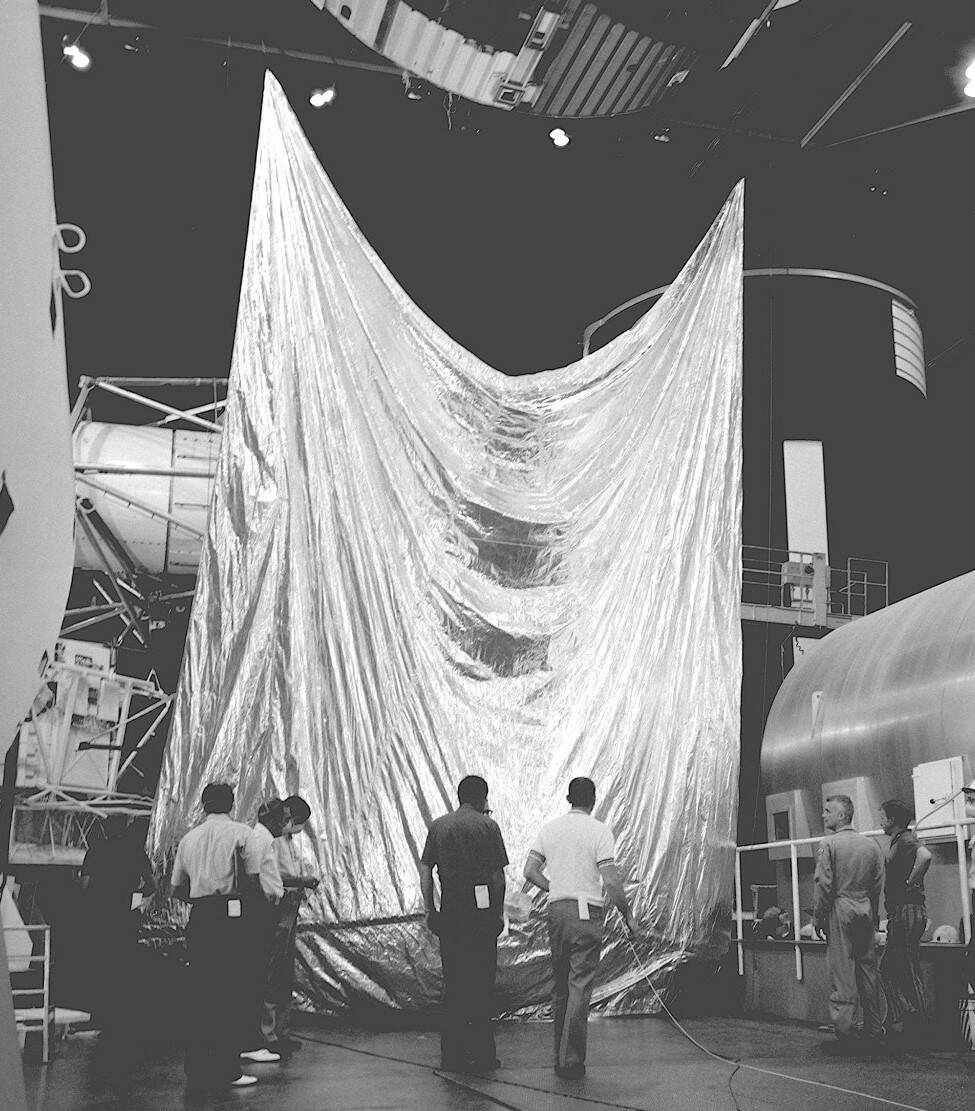
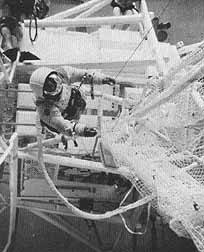
Left: Seamstresses at NASA’s Marshall Space Flight Center (MSFC) in Huntsville, Alabama, sewing the material for the twin-pole sunshade. Middle: Engineers at MSFC test the deployment of the twin-pole sunshade. Right: Skylab 3 astronaut Jack R. Lousma practices the spacewalk to deploy the twin-pole sunshade in MSFC’s Neutral Buoyancy Simulator.
During the 6-hour 31-minute spacewalk, the longest Earth-orbital spacewalk up to that time, Garriott and Lousma deployed the twin-pole sunshade over the existing parasol and replaced film canisters in the ATM. Garriott assembled the two poles, each consisting of 11 5-foot segments, and passed them to Lousma who attached them to a base plate he had installed on a handrail. Lousma then unfurled the sunshade and swiveled it to cover the station. Internal temperatures aboard Skylab dropped almost immediately into a more comfortable range.
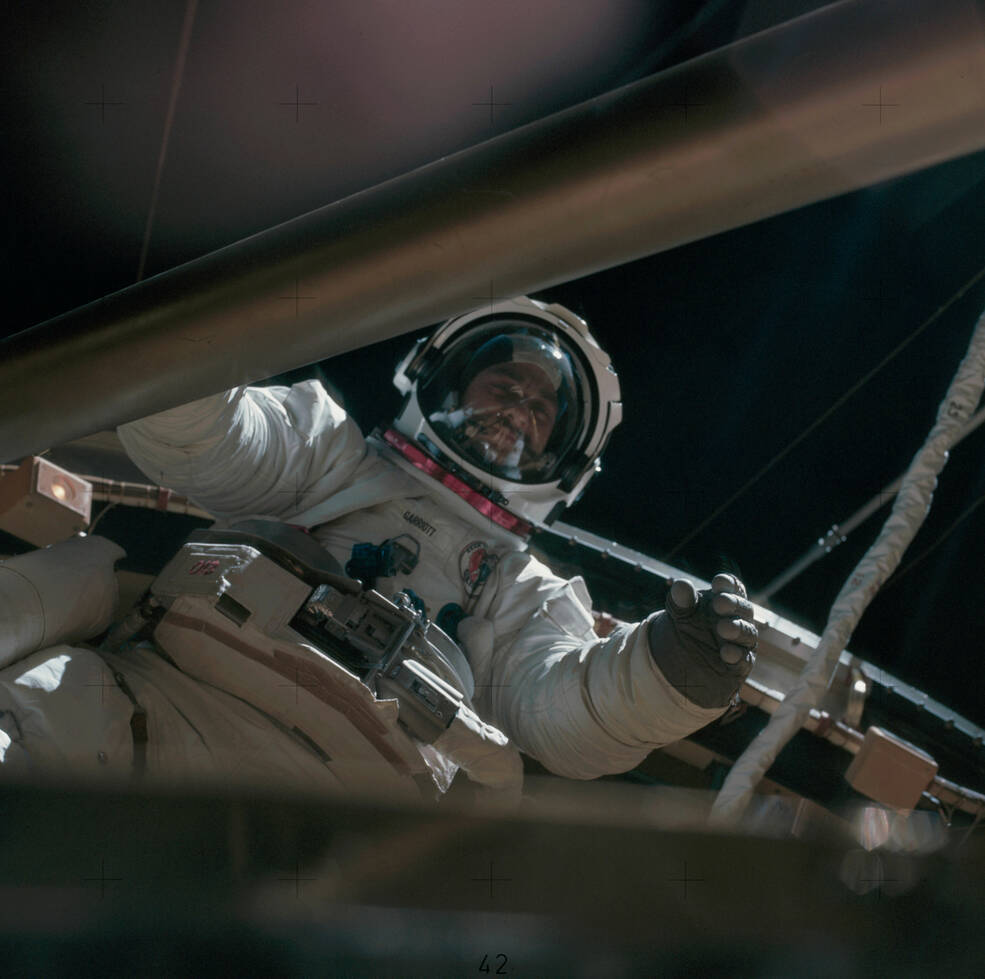
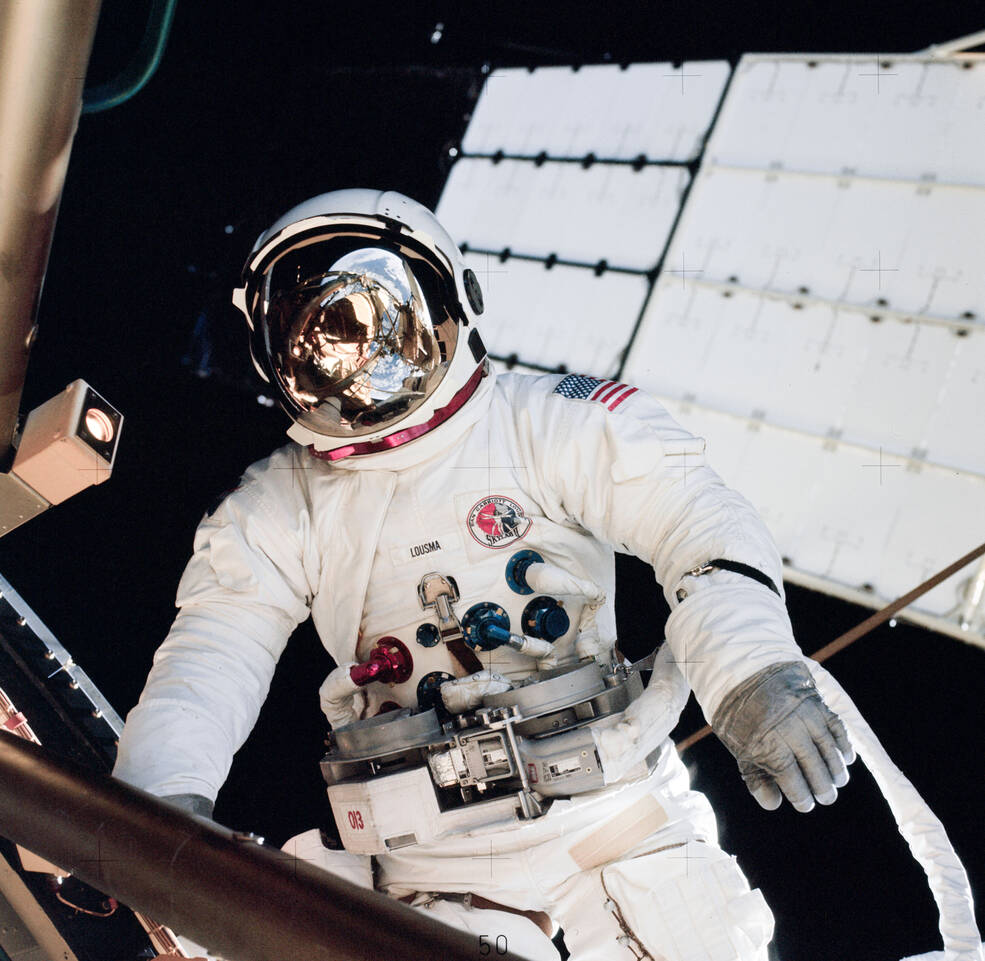
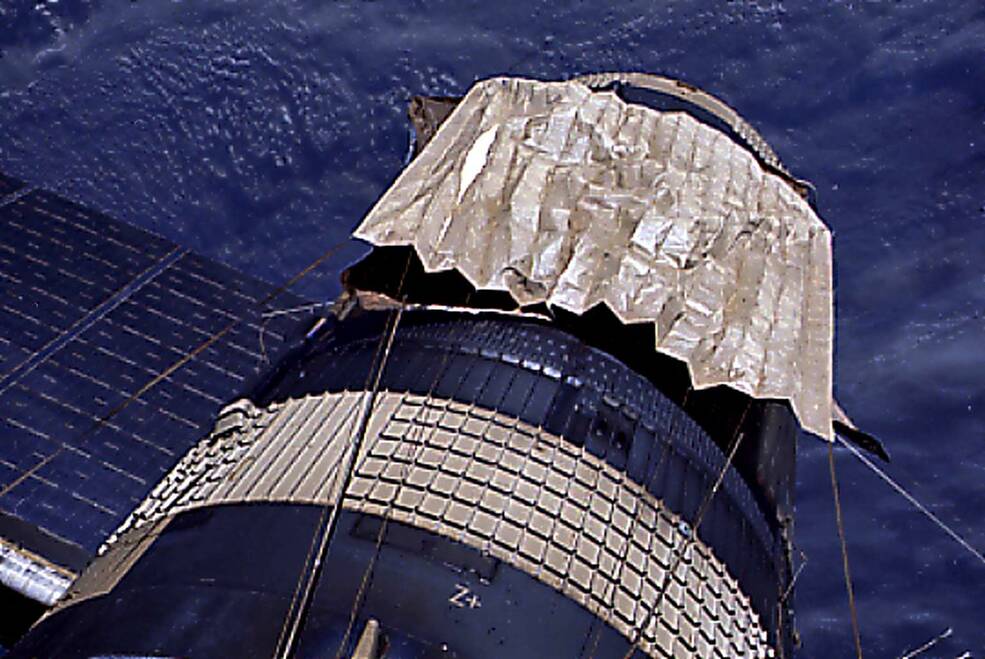
Left: Skylab 3 astronaut Owen K. Garriott during the spacewalk to deploy the twin-pole sunshade. Middle: Skylab 3 astronaut Jack R. Lousma during the twin-pole sunshade deploy spacewalk. Right: The sunshade deployed over the station, covering the original parasol.
After the successful spacewalk, the Skylab 3 astronauts resumed their science, technology and education experiments. The biomedical experiments focused on better understanding their physiological responses to long-duration space flight, including changes to their cardiovascular, neurovestibular and musculoskeletal systems and their overall metabolism and nutrition. The crewmembers continued to use the EREP to monitor selected ground sites using multispectral instruments and to make solar and astronomy observations with the ATM. As a technology demonstration, the crew practiced flying the Astronaut Maneuvering Unit (AMU) inside the spacious dome of the Orbital Workshop. The AMU demonstrated the technology of the Manned Maneuvering Unit, a jetpack-like device allowing an astronaut to freely operate outside a spacecraft and used in the Shuttle program in the 1980s during satellite servicing missions. One of the student experiments that garnered much attention was the study of how two spiders, named Arabella and Anita, spun their webs in space – they seemed to adapt quite well.
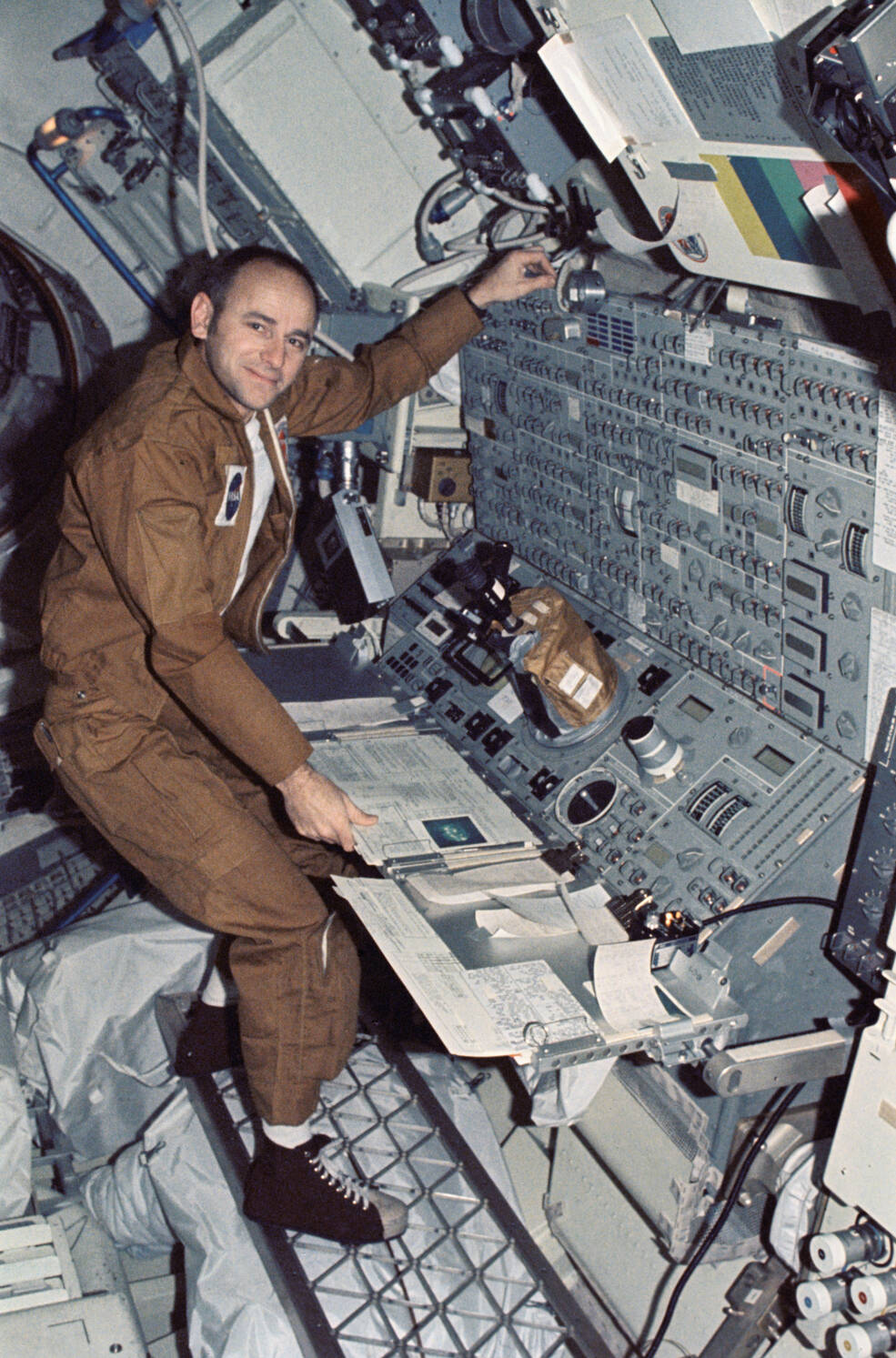
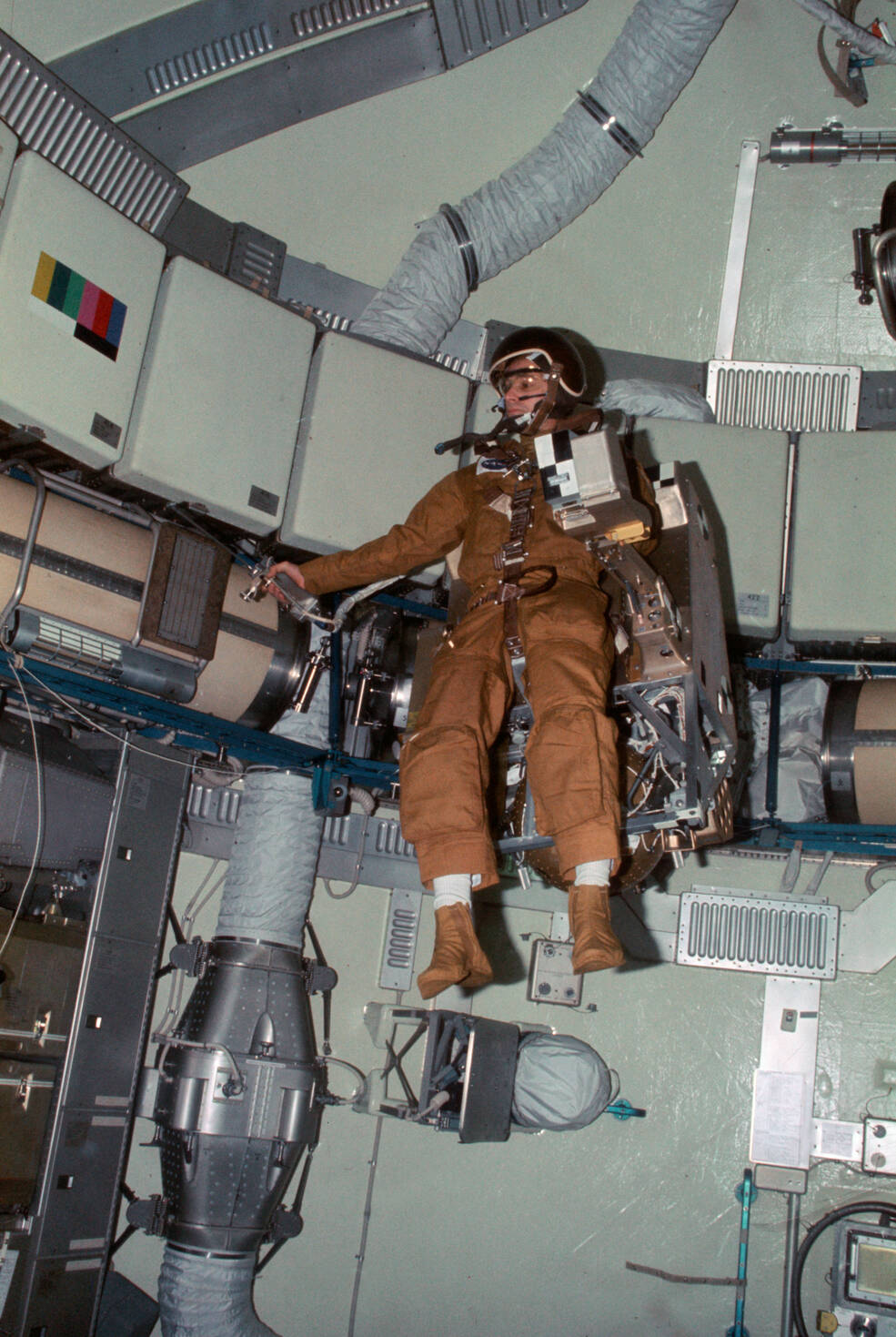
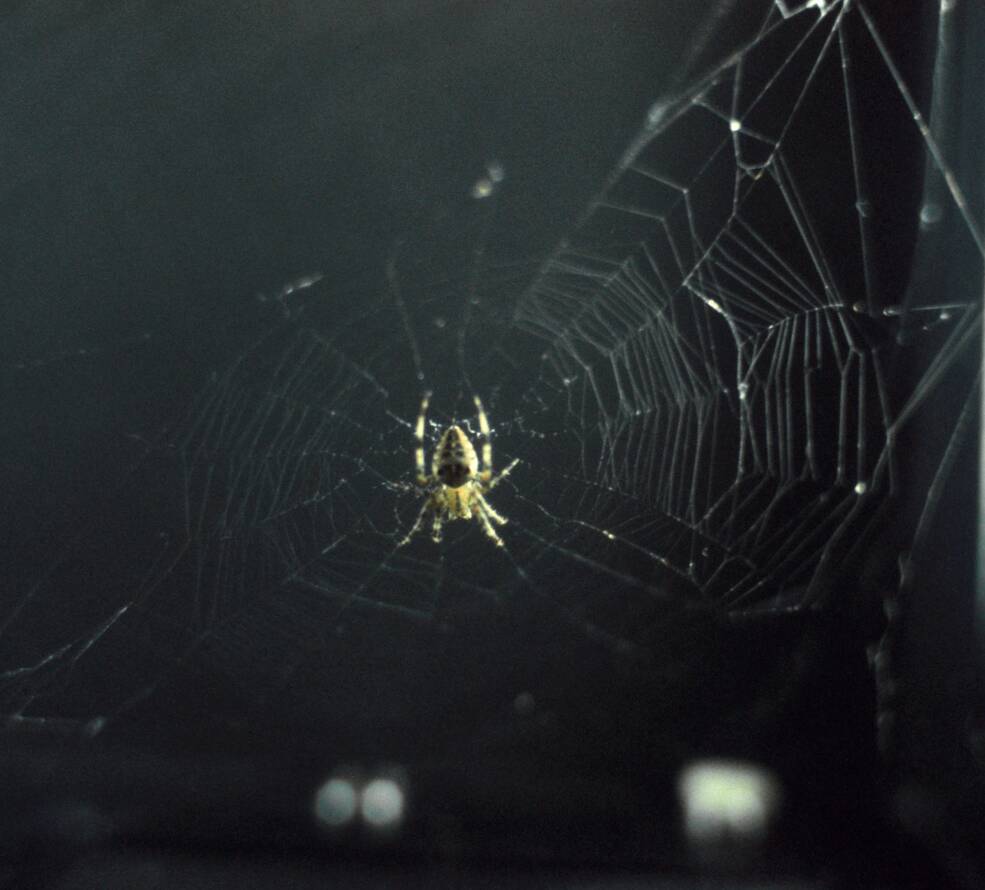
Left: Skylab 3 astronaut Alan L. Bean at the controls of the Apollo Telescope Mount. Middle: Bean flying the Astronaut Maneuvering Unit. Right: The spider Arabella and her web.
On Aug. 24, Garriott and Lousma stepped outside for the mission’s second spacewalk. During the 4-hour 31-minute activity, they replaced ATM film canisters and installed a cable for a new set of gyroscopes they mounted inside the station. The next day, the crew surpassed Skylab 2’s 28-day record for the longest human space flight. On Aug. 27, the Skylab 3 crew sent a message to the ground as part of the formal dedication ceremony for the newly renamed Lyndon B. Johnson Space Center, formerly the Manned Spacecraft Center. NASA Administrator James C. Fletcher read the message at the ceremony in which the astronauts payed tribute to the 35th President, stating that their work aboard Skylab would not have been possible except for his “strong support and leadership in the Senate and in the presidency.” Their mission had another month to go before their return to Earth.
To be continued …
John Uri
NASA Johnson Space Center





























